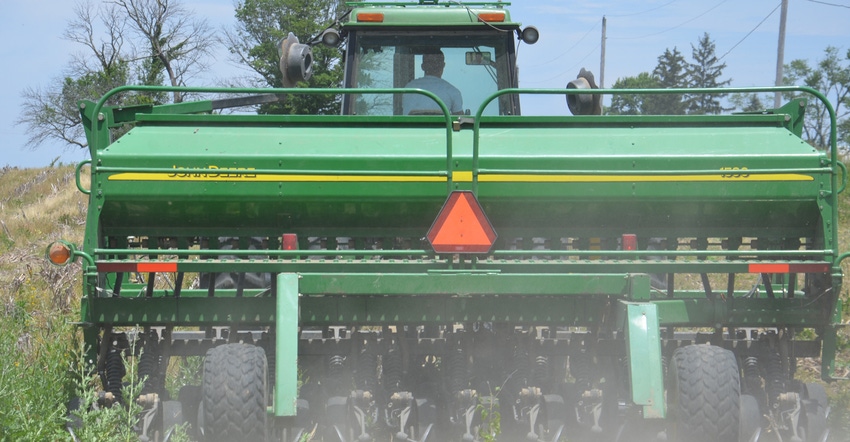
The long wait to begin the watch over a real soybean field this season is finally over. It was June 12 when the Soybean Watch ’19 field was dry enough and the operator got to it. One problem was waiting for soils to dry enough for spraying burndown herbicides, and then waiting for the opportunity to plant.
The field was drilled with a John Deere 15-foot, no-till drill into standing cornstalks. Last year, the operator planted the Soybean Watch field with his 15-inch-row, split-row planter that he also uses to plant corn. This year, trying to cover as many acres as possible since it was so late before some of his fields were accessible, he kept the no-till drill running even after he finished planting corn and started on soybeans with the planter. The no-till drill reached this field first.
To put things into perspective, in 2018, the Soybean Watch field was planted during the first week of May and yielded about 60 bushels per acre. In 2017, it was planted June 6 with the split-row planter in 15-inch rows and yielded about 50 bushels per acre. All three fields were different, but soil types are somewhat similar.
In 2017, a 6-inch rain pounded the field and flooded out a few acres, which dampened the average yield. Slugs also invaded the field in 2017, even in late June, lowering the population to about 80,000 plants per acre in places.
No slug repeat
Steve Gauck, a Beck’s sales agronomist in Greensburg, Ind., is hoping there won’t be a repeat of the slug problem this year. Beck’s sponsors Soybean Watch ’19.
Determining plant population shortly after emergence this year will be as important as it is in any year, Gauck says. While there may be little time left for replant if the stand is too thin, it at least gives an idea of what to expect.
You can use a method that allows you to count plants in a certain length of row, which Gauck uses, or you can use a hula-hoop. If you know the diameter of the hula-hoop and toss it at random in several areas of the field, you can determine population by counting and averaging the number of plants inside the hula-hoop.
You can then look up the final population per acre based on hoop diameter and stand count if you have the 2019 Purdue University Corn and Soybean Field Guide, or you can calculate it using a fudge factor based on hoop diameter if you have an older version of the guide. Gauck is a believer in the value of Purdue’s guide, and carries it in his back pocket while walking fields.
More plants, more nodes
In a normal year, Gauck feels comfortable if he finds a population of at least 80,000 plants per acre. It certainly wouldn’t pay to replant if you have that many plants, and in most cases, there is still potential for good yields. It helps if the plants are relatively evenly spaced and weeds are controlled. The quicker plants can canopy during this time of year, the better. Quicker canopy helps them capture more sunlight.
The problem with soybeans planted late is that they tend to put on fewer nodes per plant, Gauck says. Nodes determine the number of potential pods, and the number of potential pods determines the number of potential beans. The more plants in the field per acre with late planting, the better the odds of still having sufficient nodes for reasonable yields, Gauck concludes.
About the Author(s)
You May Also Like




